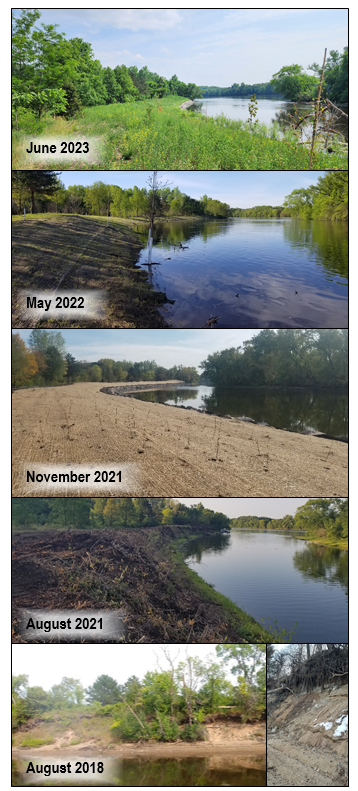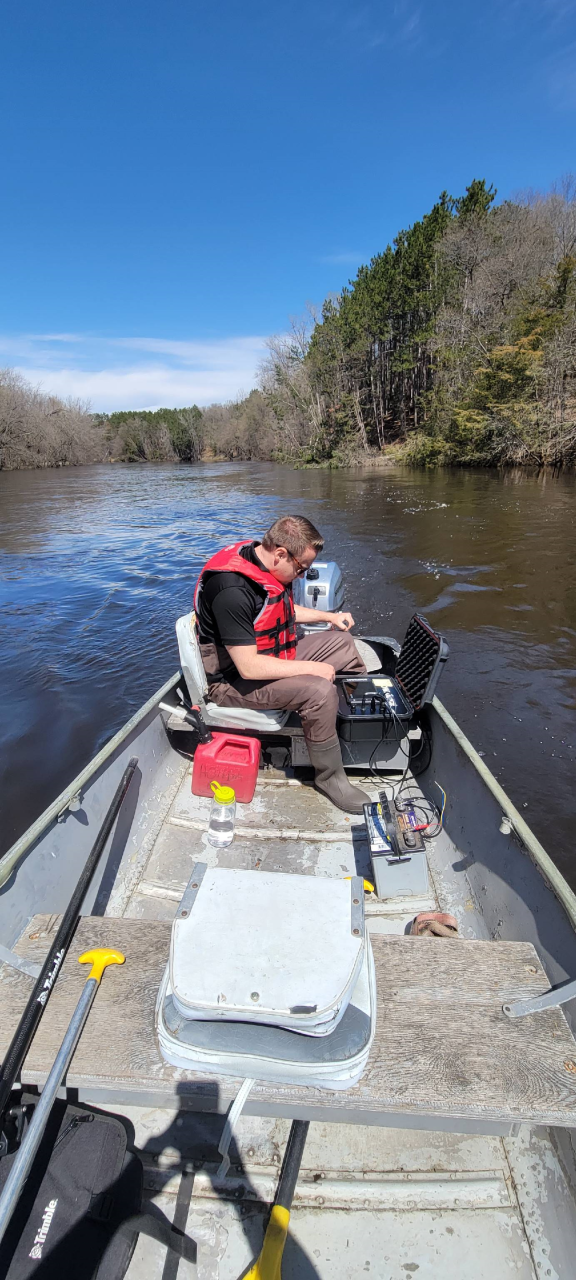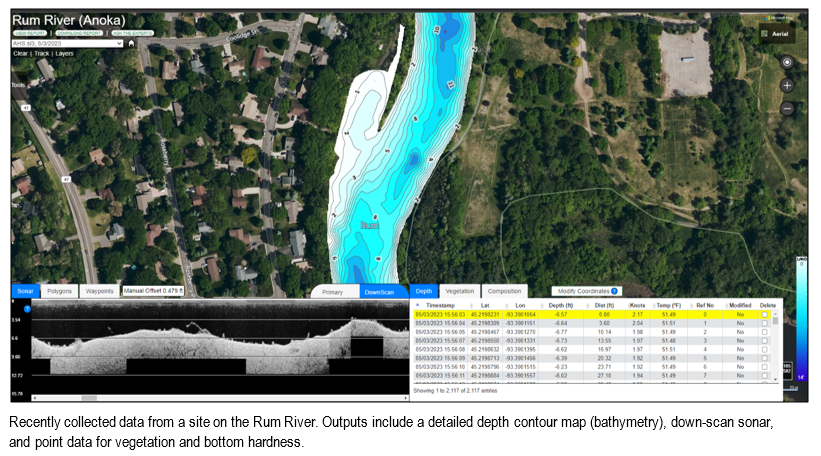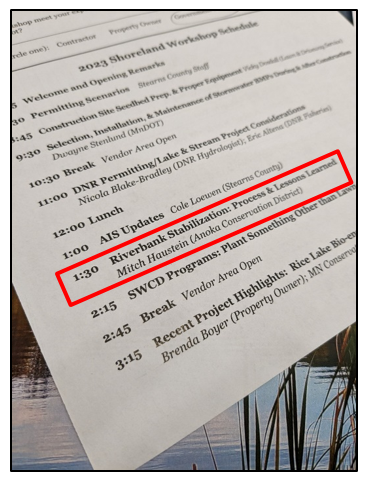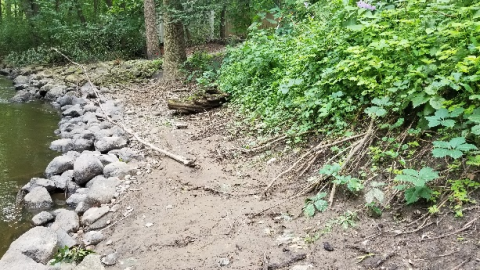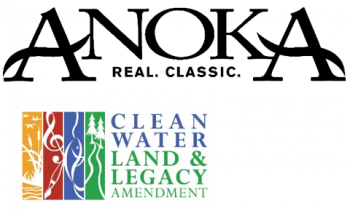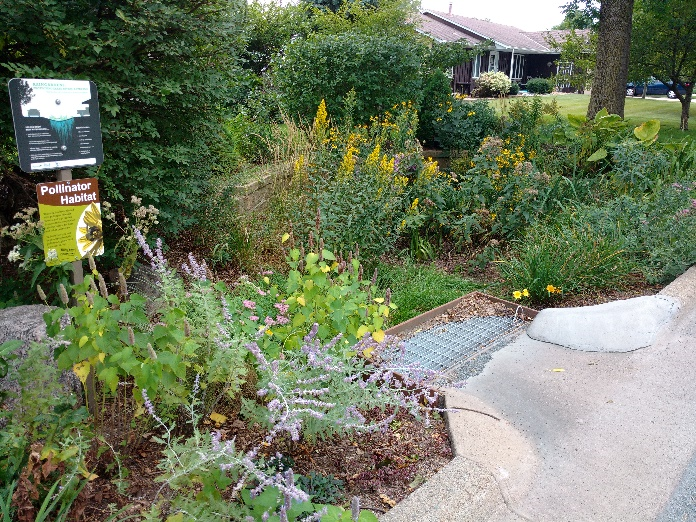Approximately 1,500 feet of severely eroding riverbank in Mississippi River Community Park was stabilized in late 2021. The project included tree clearing, bank reshaping, riprap, erosion control blanket, seeding, and planting of a variety of native plant species.
Since installation, the site has been subjected to high water in 2022 and 2023. Both the riprap on the lower elevations of the bank and the vegetation on the upper elevations have successfully stabilized the site.
Moving forward, you may observe some vegetation maintenance to help the native species establish. Some examples include supplemental planting of native species and mowing to a height of approximately 6" to limit weed species from dispersing seed.
The project was funded by a Clean Water Fund grant, a Watershed Based Funding grant, and match from the City of Anoka.
For more information about the project contact Mitch Haustein at
